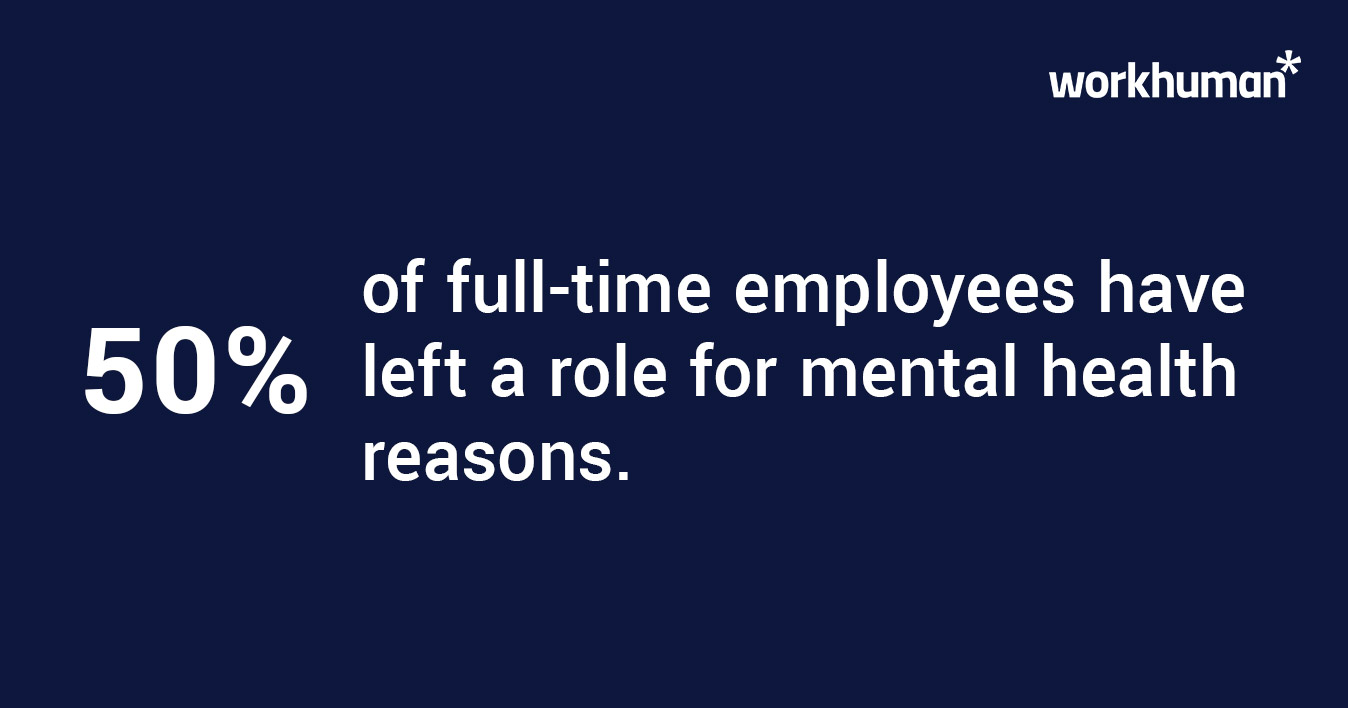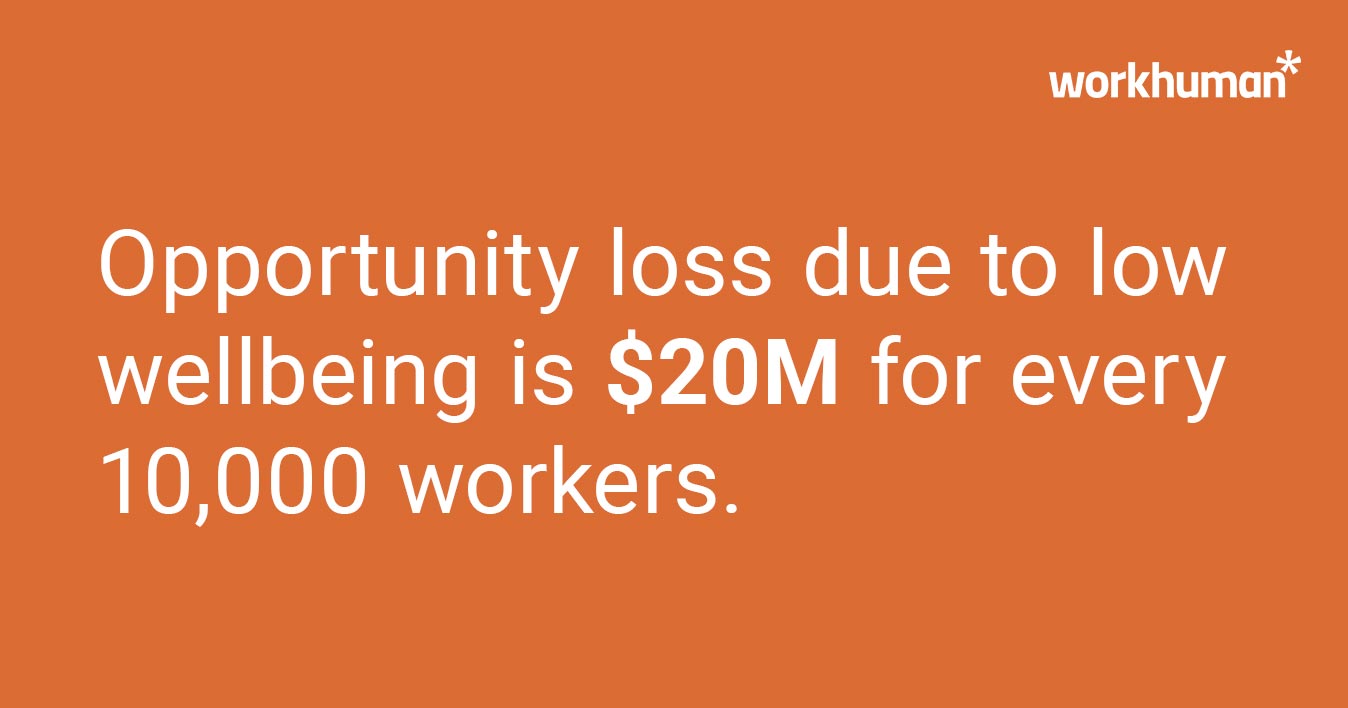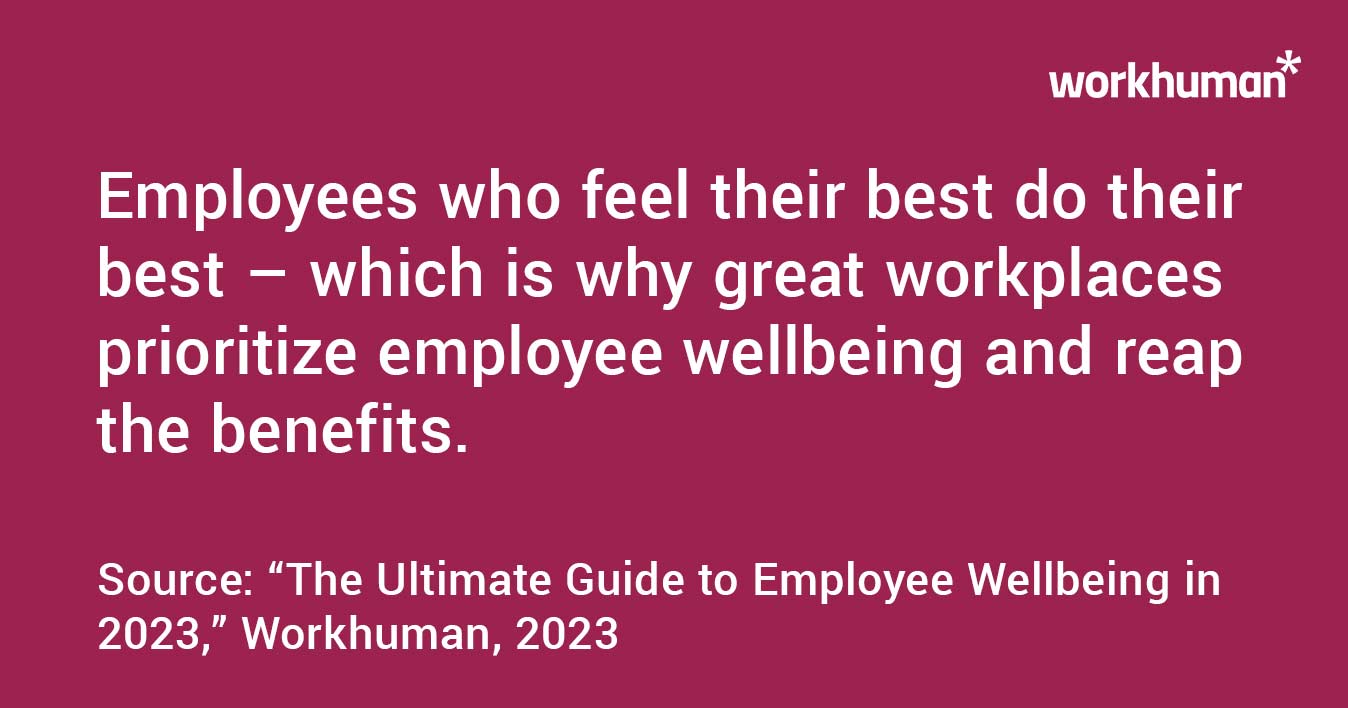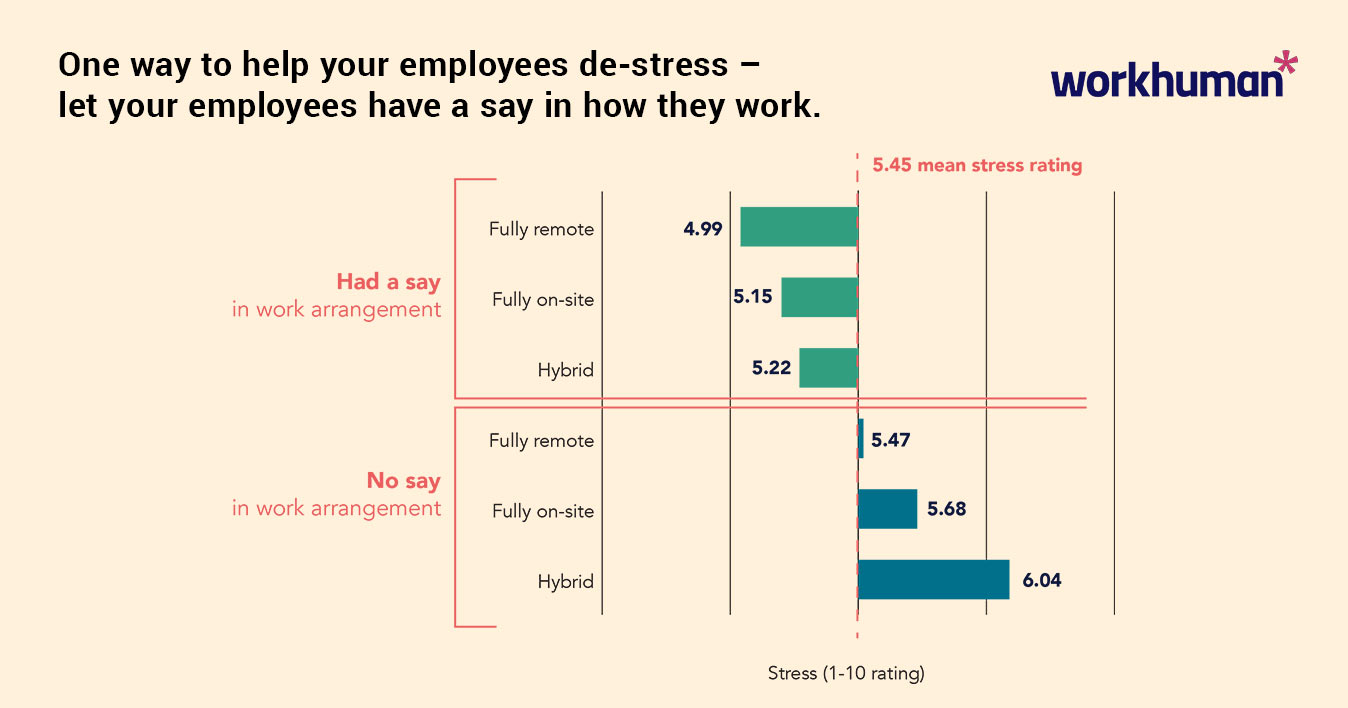How to Combat Mental Health Stigma in the Workplace

Forty percent of U.S. employees have reported that their jobs have had a negative impact on their mental health in the past six months. And yet, a study found that 65% of those managing their mental health report that they perceive stigmaOpens in a new tab about mental health in the workplace.
For more information on how a culture of recognition can amplify the wellbeing of your employees, check out this report
No matter what the cause of an employee’s poor mental health is, workplaces have a pressing imperative to reduce stigma in the workplace. Read on to learn more about this stigma, how it’s affecting your business, and actionable steps your workplace can take to fight it.
Understanding mental health stigma in the workplace
Mental health stigma is discrimination, shame, or prejudice towards groups or individuals experiencing mental health challenges or changes. Let’s look at four types of stigmas and what they can look and sound like in the workplace.
A personal stigma is an individual’s stigmatizing judgments or feelings towards another person. It might sound like, “Molly isn’t ‘depressed,’ she’s just lazy.”
Perceived stigma is an individual’s beliefs or worries about another person’s negative or stigmatizing beliefs. Perceived stigma might sound like, “If I tell my manager how bad I’m feeling, I won’t be assigned the project I need to get promoted.”
Self-stigma affects an individual and the way they discriminate or shame themselves. Self-stigma sounds like, “I’m embarrassed that I feel this anxious. I’ll pretend I’m fine.”
Structural stigma affects society and large-sized groups like the workplace by having stigmatizing policies or cultural norms that discriminate or subtly shame those who are experiencing mental illness.
Imagine opening up to your manager about extending a deadline when you have been dealing with low mental health. Their response is to keep pushing through, not to offer support (maybe your company doesn’t provide therapy benefits) or empathy (perhaps because your manager hasn’t received training).
The effects of stigma
Employees who feel they may face judgment for experiencing any fluctuations in mental health may feel uncomfortable bringing their whole selves to work. Overall, it’s a recipe for unhappy and disengaged employees. It can lead to absenteeism, dips in productivity, and increased turnover. Fifty percent of full-time employees have left a role for mental health reasons. The number is significantly higher for Millennials (68%) and Gen-Z (81%).

Mental health stigma in the workplace was also associated with lower productivity. Close to seven in ten respondents with high self-stigma levels reported missing at least a day of work because of burnout or stress.
A study on 'Mental Health in the Workplace — and the Cost of Staying SilentOpens in a new tab' by Kaiser Permanente found that 62% of missed workdays were due to mental health conditions

More alarming than declines in productivity and retention, stigma can prevent someone from getting the help they need to feel better. A study foundOpens in a new tab that that 8 out of 10 workers with a mental health condition say shame and stigma prevent them from seeking mental health care.
Not receiving help is detrimental to your employees and the business. Statistically, we know that participating in treatment works. Research found that between 70% and 90% of mental health symptoms are reduced after getting help. Eighty percent of those who receive treatment then report increased job satisfaction.
The state of mental health stigma in the workplace
Mental health stigma continues to be a challenge in the workplace. Worrisome data from the APA shows that since 2020 the percent of employees that feel safe and willing to discuss their mental health with their manager is steadily decliningOpens in a new tab.
Recent research from AXA found that over half of workers feel uncomfortable turning to their managers for help. Among those struggling, just a third are confident in approaching their managers. Forty-three percent reported worrying that if they told their employer about a mental health condition, it would have a negative impact on them in the workplace.
As with other sensitive topics in the workplace, there is a disparity between what workers believe their organization is doing to help and what the organization thinks they are doing. Fifty-five percent of workers agree that their employer thinks that their workplace is healthier than it is.
Another studyOpens in a new tab found that 84% of HR and benefits employees feel that having a mentally healthy work culture is a priority for them while only 47% of employees agree. Additionally, only 46% of employees agree that mental health support for individual employees is a priority while 95% of HR employees feel that way.
The vast dissonance between leadership and workers further highlights the need for change and reflection. HR teams should examine the steps they’ve taken to feel nearly 100% certain that they’re prioritizing mental health and then gather employee feedback on what practically would help the people in their organization.

How organizations – and their leaders – can turn stigma into support
Prioritize support and education for all employees
Society has typically viewed mental health as less important than physical health. Because of that, systemic stigmas have appeared in workplaces that value physical wellness over mental. Start by developing a comprehensive mental health policy that outlines benefits, resources, and support systems to show employees that you care about their mental wellbeing.
Additionally, offer mental health awareness and anti-stigma messaging within diversity and inclusion training programs for all employees. Be vocal about your support and commitment in internal and external messaging just as you would about physical health, and ensure that you practice what you preach.
Build-in accommodations
Having the courage and resolve to ask for accommodations when feeling mentally low can be daunting at best and impossible at worst. Never mind that it might feel awkward or embarrassing, it also adds stress and another item to the to-do list of responsibilities.
Remember that everyone is different and deserves privacy – not all employees will want to disclose what they’re going through, even if they have a positive relationship with their manager and work in a healthy culture.
Here are some possible accommodations to build into your culture:
- Embracing flexible work relieves the pressure of where, when, and how work gets done and can make a world of difference in managing stress that can trigger a mental health flareup.
- Make it clear that taking a breather is part of the workday. Employees can use this time to get outside, step away from their screens, have therapy, or care for their home or body.
- On top of that, providing paid mental health days, and not just sick days, underscores the importance that taking care of your mind is just as crucial as taking care of your physical body.
- Provide easy access to mental health resources, employee assistance programs, and employee resource groups. Share guidance on how to take the first step to joining or accessing these programs.

Train people leaders
All people leaders need to know how to recognize when someone might be struggling and understand how they can help ease the burden. Provide training that educates people leaders on mental health conditions, signs, and symptoms, and how to have judgment-free conversations.
Managers can utilize check-ins to ask about employees beyond their work responsibilities. Offer training in active listening, empathy, and asking open-ended questions. Ensure leaders are up to date on the benefits, referrals, and support that your organization offers.
And finally, encourage leaders to model the behaviors by prioritizing self-care, setting boundaries, and treating their mental health with care.
Use inclusive language
The language we use when talking about mental health impacts how a culture perceives it. “Snap out of it” is less inclusive and more harmful than “I’m sorry to hear that. How can I help?” Language helps us validate and normalize the feelings we may be nervous or hesitant to discuss. The more we talk about these feelings, the less power the stigma will hold.
Share educational resources with leaders and employees to help everyone make smarter language choices. Here are some other language swaps you can make when discussing mental health with a colleague:
- Instead of “Everyone feels like that sometimes.” say, “I can’t imagine what you’re going through.”
- Instead of “We’ve all been there,” say, “Thanks for opening up to me.”
- Instead of “It could be worse,” say, “I’m here when you need me.”
Conclusion
Mental health stigma in the workplace harms employees, their output, and a business’ culture and results. But it shouldn’t be this way – normalizing mental health fluctuations and viewing problems as treatable is the direction society needs to move toward. Educate and validate your workers, and create an empathetic and safe culture to help your organization and employees thrive.
About the author
Alicyn Zall
Alicyn Zall is a writer dedicated to creating a more equitable and fulfilling workplace. With a focus on actionable, data-driven insights, her work empowers individuals and organizations to foster positive change. In addition to her contribution at Workhuman, Alicyn has served as an editor at Harvard Business Review where she developed books and articles about mental health and the future of work.